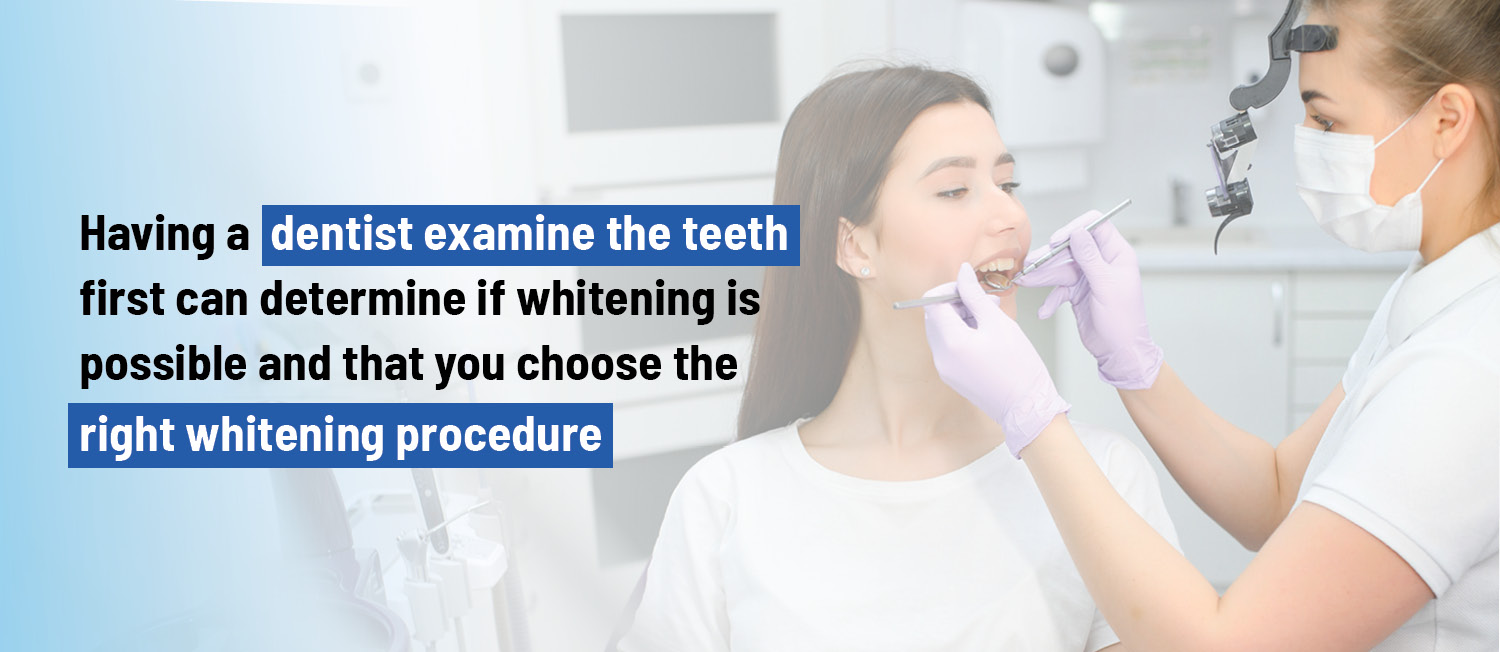At-home teeth whitening allows many patients to achieve a brighter smile within a week or two. While most whitening strips are considered safe when used as instructed, there can be some side effects to watch for — and certain ingredients that should be avoided. We will discuss how whitening strips work and why professional teeth whitening might be a better option for some patients.
What are Teeth Whitening Strips Made Of, and Are They Safe?
Home whitening strips generally contain either hydrogen peroxide or carbamide peroxide as the active ingredient.
Adding hydrogen to peroxide creates “oxidization” to dissolve stains on teeth. Most research shows that hydrogen peroxide does not cause adverse reactions when used to whiten teeth, as long as the strips don’t contain more than 14% of it. In higher doses, hydrogen peroxide can damage enamel.
Carbamide peroxide breaks down into hydrogen peroxide in the presence of water. It also works as an oxidizing agent and is considered safe when used as directed. However, it can irritate the dental nerves and cause chemical burns on gums if whitening strips are worn for too long.
Although not as common these days, some teeth whitening strips may contain chlorine dioxide, which is a disinfectant similar to bleach. While the harsh chemical can be effective at removing plaque and stains from teeth, it dissolves enamel in the process. Enamel has the important job of protecting teeth from bacteria, so this is a major reason to avoid any whitening products containing chlorine dioxide.
What Can Go Wrong With Teeth Whitening At Home?
Whitening is not bad for your teeth, but if you have cavities, certain allergies, don’t follow instructions on the packaging, or purchase a product that contains harmful ingredients, you may experience undesirable side effects while using whitening strips. These could include:
Pain due to cavities. When enamel is compromised due to decay, whitening formula can enter the tooth and cause severe pain.
Allergy symptoms. Some patients are allergic to hydrogen peroxide and don’t realize it until they use whitening strips for the first time. If you notice swelling, redness, or irritation in the gums, lips, or throat, stop using the strips immediately.
Tooth sensitivity. If your teeth ache while wearing the strips or you feel a zing when drinking or eating hot or cold products, you may be wearing the strips for too long. Make sure to follow the instructions and set a timer for the 20 or 30 minutes that the product calls for.
Gum irritation. The active ingredients in whitening strips work well to bleach teeth, but are not meant to come in contact with gums. If your gums are sore, red, and inflamed after you remove the strips, try to align the strips so they don’t touch your gums. If that’s not possible, try looking for a product with a lower concentration of peroxide.

Is Professional Teeth Whitening Better Than Store-Bought Whitening Strips?
It’s not that at-home whitening strips are bad for your teeth, but there are advantages to having a dentist oversee the bleaching process.
Not all Teeth Can Be Whitened
Patients can waste a lot of money on whitening strips before knowing if they will work. For example, whitening doesn’t work on:
- Teeth that have brown or gray tone
- Veneers, caps, fillings, and dental crowns
- Teeth that are discolored due to intrinsic decay or damage (however, those teeth can sometimes be bleached from the inside).
Having a dentist examine the teeth first can determine if whitening is possible and that you choose the right whitening procedure
A Custom Fit is More Effective
Whitening strips are made in a one-size-fits-all format, even though everyone’s mouth is shaped differently. Professional teeth whitening trays are custom-made at your dentist’s office to fit your upper and lower teeth, which reduces the chances of excess bleach reaching the gums and causing irritation.
In-Office Whitening Achieves More Noticeable Results in Less Time
Because the process is supervised by a dentist, professional teeth whitening applied in-office is much stronger than the at-home strips. The more concentrated formula can change the color of teeth up to 8 shades whiter in just an hour, and gums stay safe because the tissue is covered with a thin sheet of rubber or a protective gel. This is in comparison to store-bought strips that might brighten your teeth 3-6 shades after spending 30 minutes per day for 2 weeks. Professional teeth whitening also penetrates deeper into the surface of the tooth, so teeth stay white longer than with whitening strips.
Routine Dentist Visits Can Keep Your Teeth Brighter
While whitening strips are a safe, affordable option to whiten teeth, the best way to achieve a bright smile and ensure your teeth are healthy is to schedule regular dentist appointments. During routine dental cleanings, discoloration from coffee, wine, and other stains, can be removed and the teeth will be polished. A dentist will also check for cavities and tell you whether it’s safe to use teeth whitening procedures, and if so, recommend the best option.
To find a dentist near you, click here.


